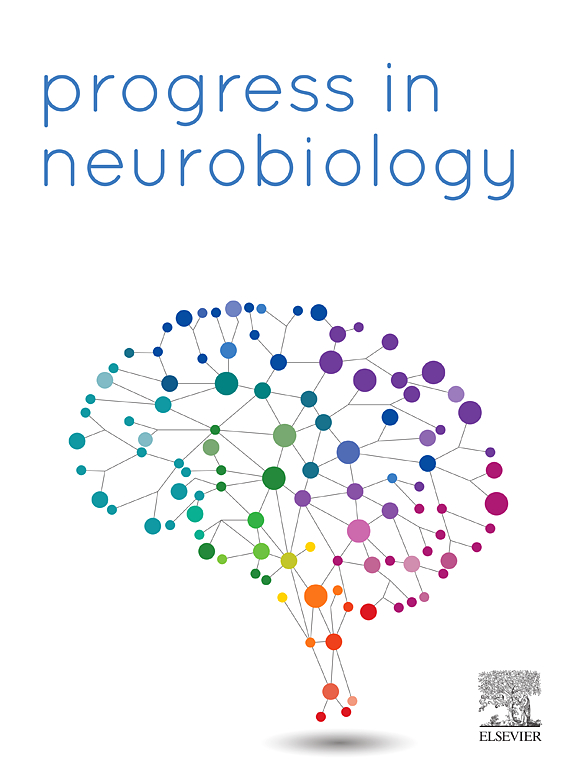Whole-brain effective connectivity of the sensorimotor system using 7 T fMRI with electrical microstimulation in non-human primates
IF 6.1
2区 医学
Q1 NEUROSCIENCES
引用次数: 0
Abstract
The sensorimotor system is a crucial interface between the brain and the environment, and it is endowed with multiple computational mechanisms that enable efficient behaviors. For example, predictive processing via an efference copy of a motor command has been proposed as one of the key computations used to compensate for the sensory consequence of movement. However, the neural pathways underlying this process remain unclear, particularly regarding whether the M1-to-S1 pathway plays a dominant role in predictive processing and how its influence compares to that of other pathways. In this study, we present a causally inferable input–output map of the sensorimotor effective connectivity that we made by combining ultrahigh-field functional MRI, electrical microstimulation of the S1/M1 cortex, and dynamic causal modeling for the whole sensorimotor network in anesthetized primates. We investigated how motor signals from M1 are transmitted to S1 at the circuit level, either via direct cortico-cortical projections or indirectly via subcortical structures such as the thalamus. Across different stimulation conditions, we observed a robust asymmetric connectivity from M1 to S1 that was also the most prominent output from M1. In the thalamus, we identified distinct activations: M1 stimulation showed connections to the anterior part of ventral thalamic nuclei, whereas S1 was linked to the more posterior regions of the ventral thalamic nuclei. These findings suggest that the cortico-cortical projection from M1 to S1, rather than the cortico-thalamic loop, plays a dominant role in transmitting movement-related information. Together, our detailed dissection of the sensorimotor circuitry underscores the importance of M1-to-S1 connectivity in sensorimotor coordination.
使用7 T功能磁共振成像与电微刺激在非人类灵长类动物的感觉运动系统的全脑有效连接
感觉运动系统是大脑和环境之间的关键接口,它被赋予了多种计算机制,使有效的行为。例如,通过对运动指令的复制进行预测处理被认为是用来补偿运动的感觉后果的关键计算之一。然而,这一过程背后的神经通路尚不清楚,特别是M1-to-S1通路是否在预测加工中起主导作用,以及它与其他通路的影响如何。在这项研究中,我们提出了一个因果推理的感觉运动有效连接的输入-输出图,我们结合了超强场功能MRI, S1/M1皮层的电微刺激,以及对麻醉灵长类动物整个感觉运动网络的动态因果建模。我们研究了M1的运动信号是如何在回路水平上通过皮质-皮层直接投射或间接通过皮层下结构(如丘脑)传递到S1的。在不同的增产条件下,我们观察到M1到S1之间存在强大的不对称连通性,这也是M1最突出的输出。在丘脑中,我们发现了不同的激活:M1刺激显示与丘脑腹侧核的前部相连,而S1与丘脑腹侧核的后部相连。这些发现表明,从M1到S1的皮质-皮质投射,而不是皮质-丘脑回路,在传递运动相关信息中起主导作用。总之,我们对感觉运动电路的详细剖析强调了m1到s1连接在感觉运动协调中的重要性。
本文章由计算机程序翻译,如有差异,请以英文原文为准。
求助全文
约1分钟内获得全文
求助全文
来源期刊

Progress in Neurobiology
医学-神经科学
CiteScore
12.80
自引率
1.50%
发文量
107
审稿时长
33 days
期刊介绍:
Progress in Neurobiology is an international journal that publishes groundbreaking original research, comprehensive review articles and opinion pieces written by leading researchers. The journal welcomes contributions from the broad field of neuroscience that apply neurophysiological, biochemical, pharmacological, molecular biological, anatomical, computational and behavioral analyses to problems of molecular, cellular, developmental, systems, and clinical neuroscience.
 求助内容:
求助内容: 应助结果提醒方式:
应助结果提醒方式:


